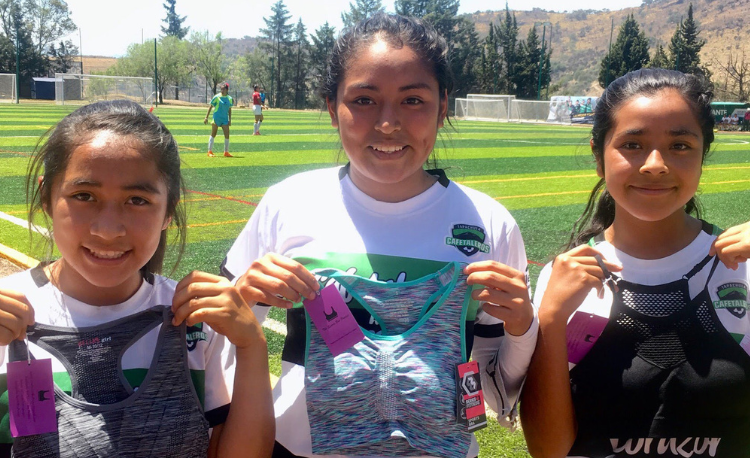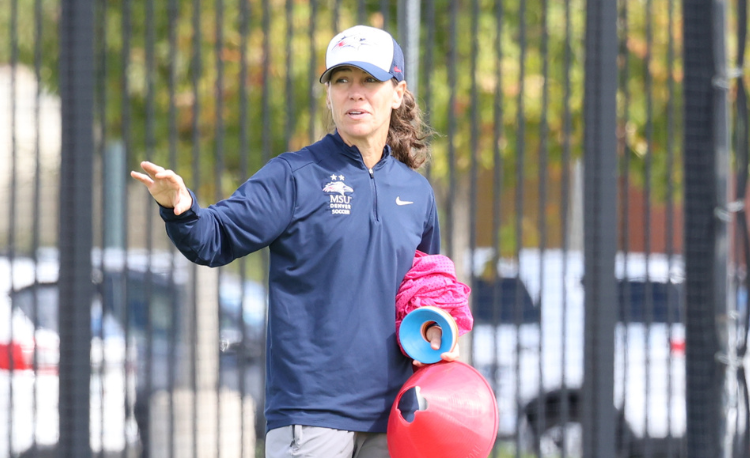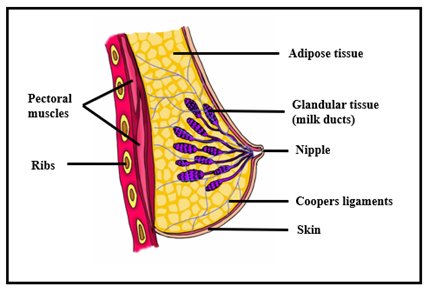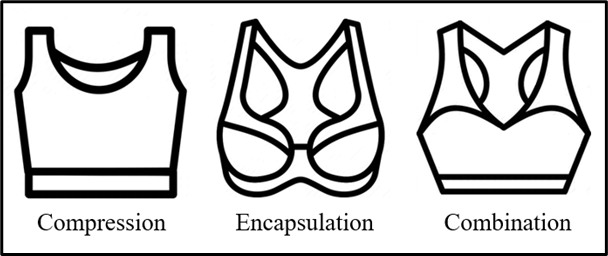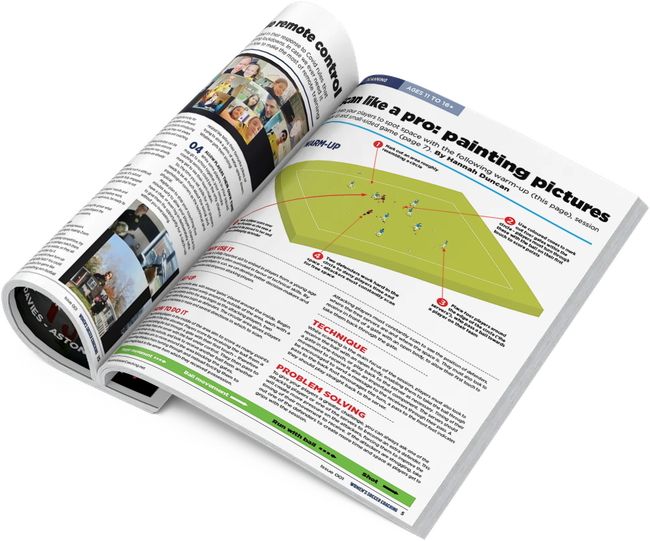You are viewing
1 of your 3 free articles
How to find the right sports bra
Breasts can move 15cm during running. Dr Nicola Brown gives guidance on obtaining the correct sports bra fit to help women exercise in greater comfort.
The evolution of technology and sportswear aims to improve performance and prevent injuries.
However, the sports industry regularly overlooks sports bras, the first of which was developed back in 1977.
Since then, the sports bra has undergone many advancements, and has become vital in reducing discomfort and injury during sport and physical activity.
But, while athletes may feel comfortable discussing their injuries, they may be hesitant about breast-related issues.
In a 2020 study, by researchers at the University of Wollongong in Australia, 58% of athletes reported suffering a contact breast injury during the season – with nearly half reporting an effect on their performance.
However, the coaches and medical staff estimated fewer than 5% of players had sustained a breast injury, suggesting a reluctance among athletes to discuss it.
Furthermore, at the 2020 Olympic Games, it was the first time that Great Britain’s female athletes had received bespoke breast support, using innovative technology.
Therefore, a greater understanding of breast movement during exercise must inform sports bra design and fit, to allow women to perform optimally and comfortably.
Breast anatomy and movement
The breasts sit on top of the chest wall, with each weighing approximately 200g (A and B cups) to 1000g (≥ D cup).
The breast does not contain any muscle tissue. It comprises adipose and specialized (glandular) tissue that produces milk.
The only anatomical support is provided by the skin and fibrous tissue, referred to as Cooper’s ligaments. These are thin, paper-like tissues, that weave throughout the breast and attach to the chest wall.
As a result of the limited anatomical support, the breasts may move excessively over the chest wall during physical activity.
The movement occurs in three dimensions, with breasts reported to move, on average, 4.2 cm to 9.9 cm in the vertical direction; 1.8 cm to 6.2 cm in the medial-lateral direction; and 3 cm to 5.9 cm in the anterior-posterior direction.
Thus, breast movement during physical activity may lead to several negative consequences.
Negative consequences of breast movement
Up to 72% of general-exercising females, and 44% of athletes, report pain during physical activity.
The incidence of breast pain is relative to size, but it is not exclusive to women with larger breasts.
The etiology of breast pain is unknown, but may be due to tension on the supporting structures during movement.
Furthermore, repeated loading may lead to irreparable damage, resulting in accelerated breast ptosis (sag), whereby the nipple migrates downwards below the inframammary fold.
Changes in the level of breast support impact performance, and result in biomechanical and physiological changes.
For example, lower levels of support lead to increased ground-reaction forces, which may have injury-risk implications.
In addition, running economy is a crucial factor when assessing performance; less economical upper-body patterns are evident when participants run in low-level breast support.
This is an essential consideration for distance runners, since breasts are estimated to bounce around 10,000 times during one hour of slow running.
Additionally, athletes may reduce their stride length to reduce breast movement, possibly adding an extra mile over a marathon.
Finally, the independent movement of the breast during activity can be embarrassing and reduce confidence levels, particularly in larger-breasted women.
These breast-related issues can create a barrier to physical activity participation, with 17% of adult females and 46% of schoolgirls avoiding physical activity because of their breasts.
Related Files
Sports bras
Wearing a well-fitted sports bra, instead of an everyday bra, can limit breast motion during exercise, reduce pain, and improve performance.
There are currently three distinct sports bra designs on the market: compression, encapsulation, and combination.
Compression bras are typically constructed from one piece of strong elastic material, designed to flatten the breasts against the chest wall. Typically, they pull over the head and do not have cups.
Encapsulation bras incorporate individual cups to surround and support each breast separately.
Finally, combination bras encapsulate and compress the breasts to varying degrees, depending on specific design features.
There is no consensus on whether one sports bra type is superior. However, compression bras may be more suitable for smaller-breasted women (< D cup), and encapsulation bras for larger-breasted women (≥ D cup).
It is common to see sports bras advertised as low, medium, or high-impact, referring to the level of support the bra provides during activities. However, evidence-based standards for these categories have not been established.
In addition, there are specific design features that may influence the levels of support and comfort:
- Sports bras with higher necklines (i.e., which reach the upper boundary of the breast tissue) are considered more supportive.
- Vertical, wide (4.5 cm) and padded straps improve comfort. In addition, various shoulder strap configurations – such as vertical, cross-over and racerback – are available, but appear to have little impact on support levels, with the adjustability of straps considered more critical to accommodate varying torso lengths.
- To help maintain a comfortable breast temperature, and avoid skin irritation, material that can wick sweat away from the body may be advantageous.
Getting the best fit
With a wide choice of brands, styles and sizes on the market, and a lack of standardization of sizing, selecting a well-fitting sports bra can be challenging.
Additionally, breasts can change size, shape, and position throughout the menstrual cycle and at different life stages. Therefore, it is unsurprising that approximately 85% of women wear ill-fitting bras.
Researchers at the University of Portsmouth, in England, found that the traditional tape measurement method is unreliable, as it overestimates the underband size, and underestimates the cup size.
Instead, education on professional bra fitting criteria improves the ability to choose a well-fitted bra.
Conclusion
The negative consequences of an ill-fitting bra impact physical activity participation and performance.
The appropriate sports bra fit is essential to reduce breast pain, injury, and embarrassment.
Unfortunately, many women wear inappropriate and ill-fitting breast support garments during exercise. Thus, breast support and bra selection education are essential to reduce long-term health issues and performance impairments.
Newsletter Sign Up
Newsletter Sign Up
Discover the simple way to become a more effective, more successful soccer coach
In a recent survey 89% of subscribers said Women's Soccer Coaching makes them more confident, 91% said Women's Soccer Coaching makes them a more effective coach and 93% said Women's Soccer Coaching makes them more inspired.
*includes 3 coaching manuals
Get Inspired
All the latest techniques and approaches
Women's Soccer Coaching offers proven and easy to use soccer drills, coaching sessions, practice plans, small-sided games, warm-ups, training tips and advice.
We've been at the cutting edge of soccer coaching since we launched Soccer Coach Weekly in 2007, creating resources for the grassroots youth coach, following best practice from around the world and insights from the professional game.


